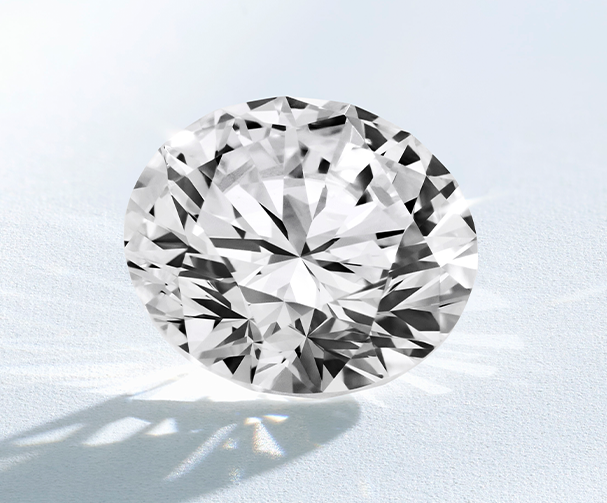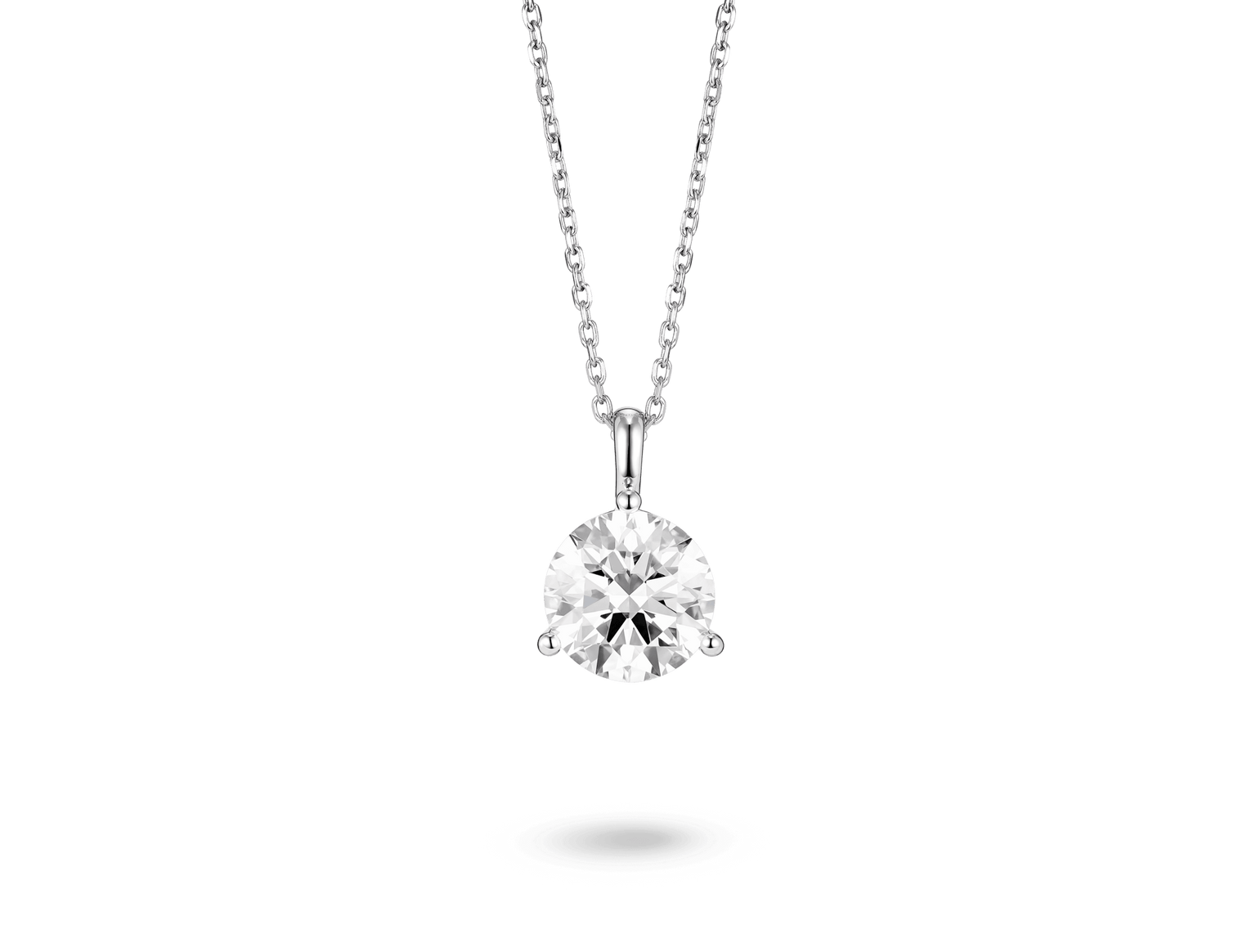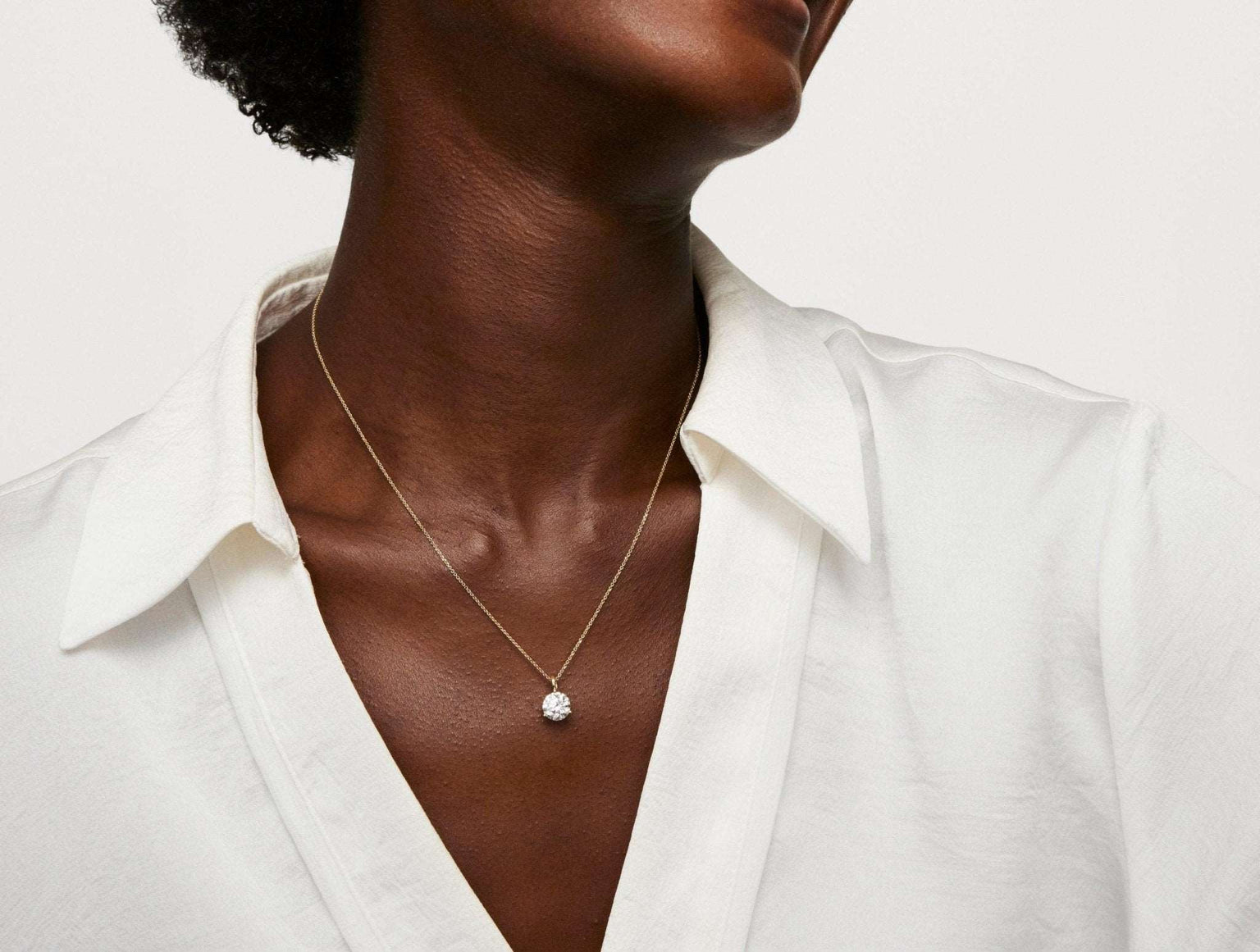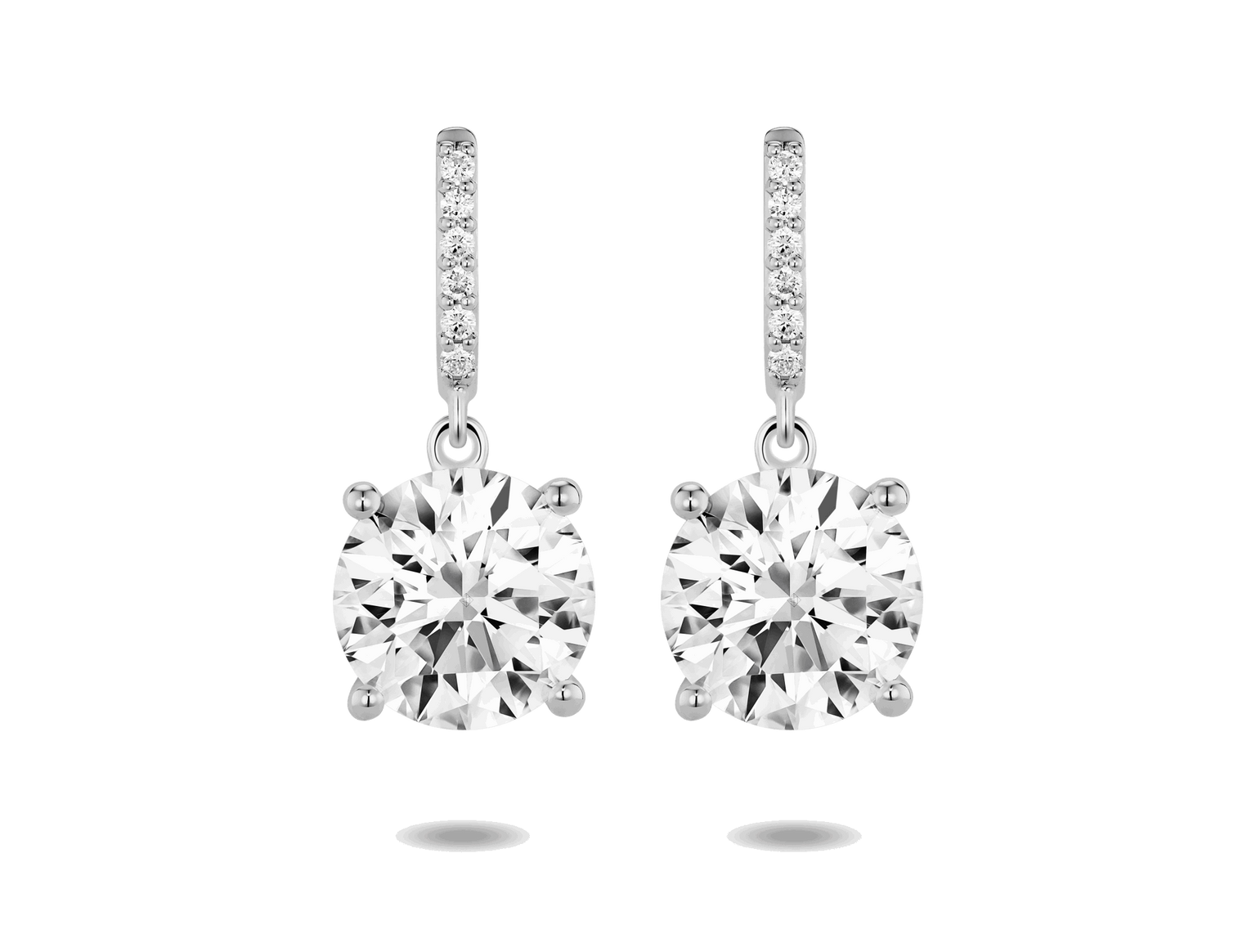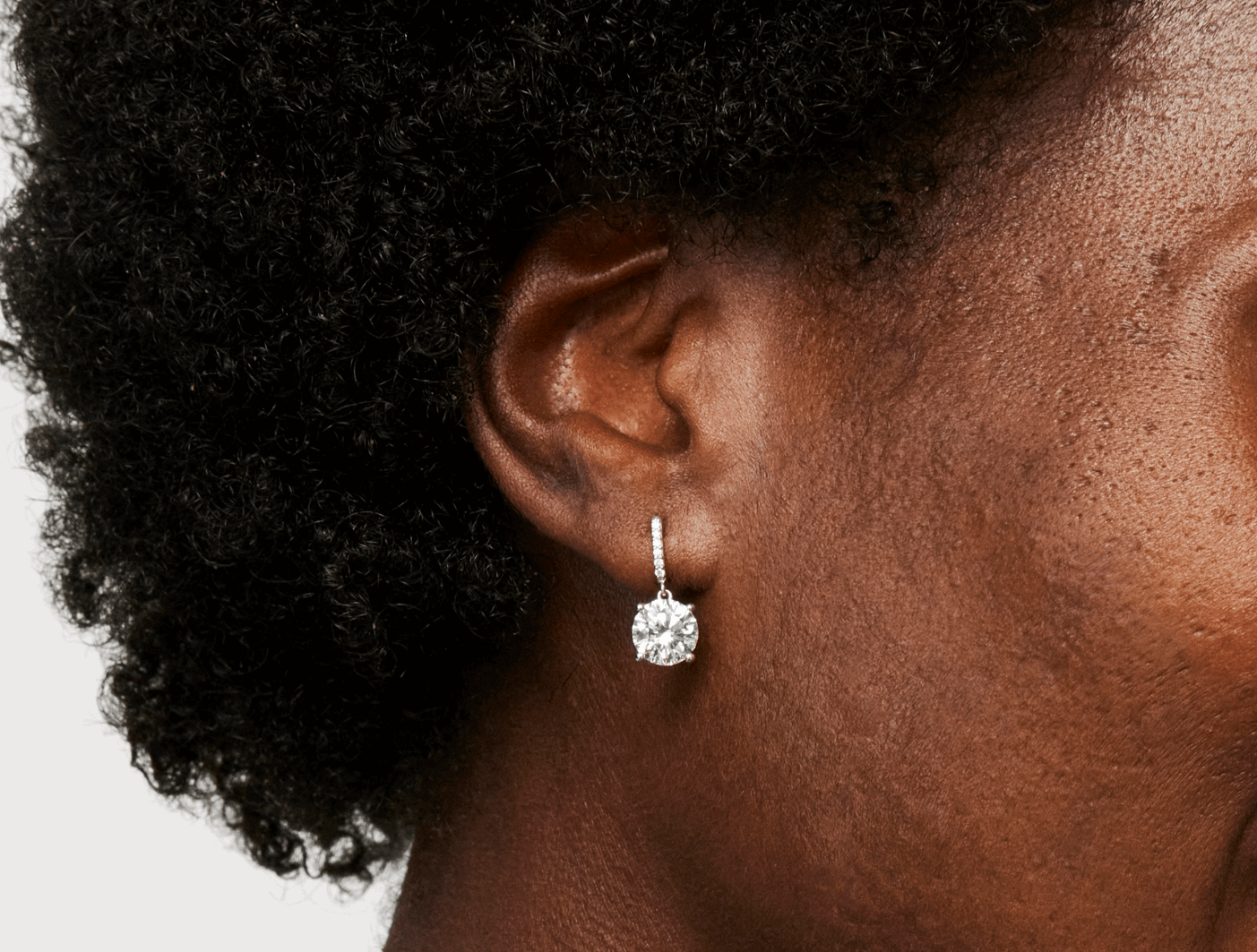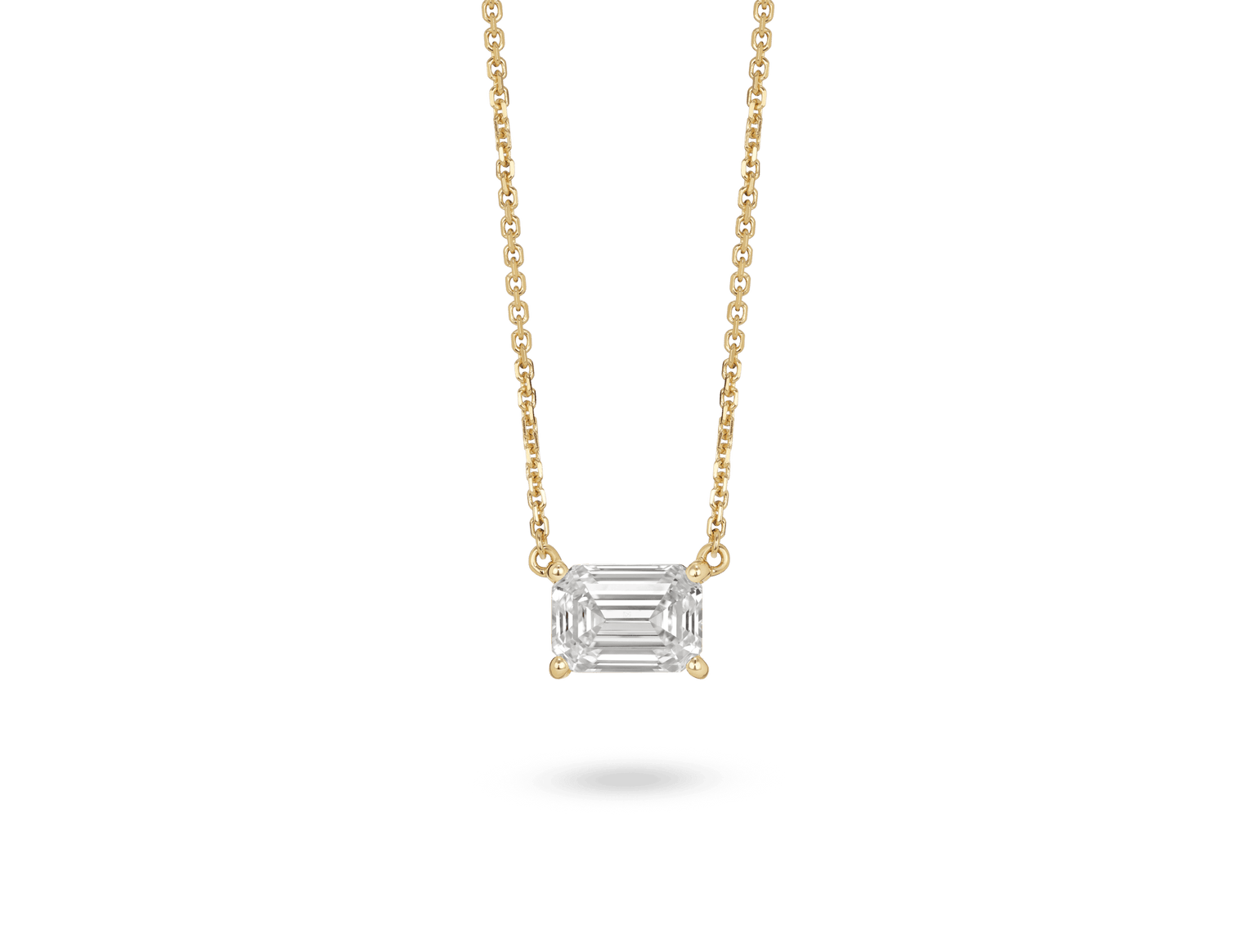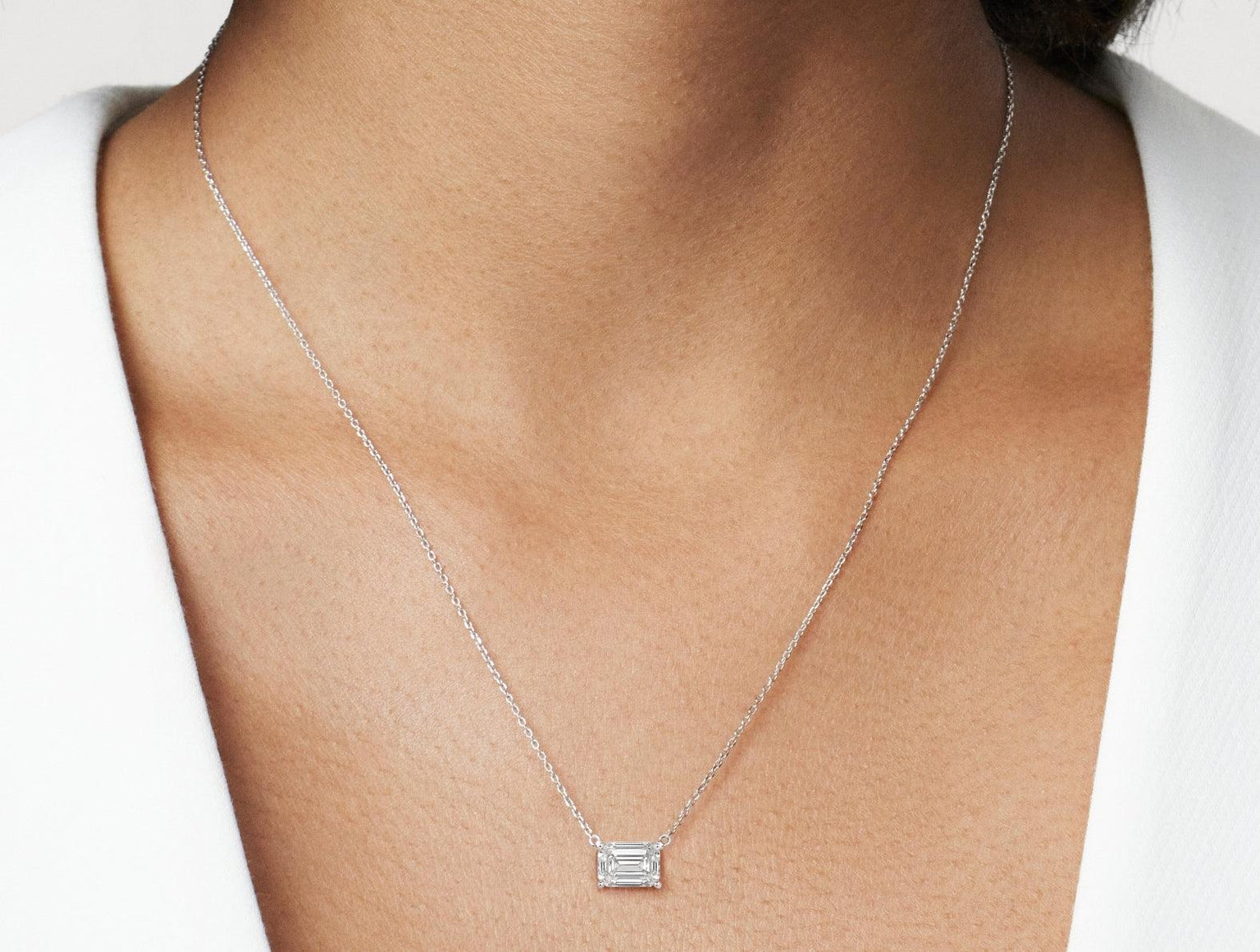When it comes to achieving excellence in lab-grown diamonds, Lightbox Finest™ sets new benchmarks in quality and craftsmanship. We’re excited to share with you how Lightbox Finest™ lab-grown diamonds are made, emphasizing their exceptional color, clarity, cut, and carat weight. Developed using patented CVD methods and produced in a state-of-the-art facility, these lab diamonds meet the highest industry standards.
Whether you're a first-time buyer or looking to expand your collection, we’re here to equip you with valuable information to make an informed choice. Explore what makes Lightbox Finest™ lab-grown diamonds stand out in a crowded market.
Making Lightbox Finest™ Lab-Grown Diamonds
Creating a Lightbox Finest™ lab-grown diamond involves a specialized procedure that begins with an already exceptional product: our classic Lightbox lab-grown diamond. (And if you’re curious to learn what are lab-grown diamonds, we have resources on that.) We then enhance this base material through a patented CVD growth method coupled with a secondary refinement process, achieving the highest grades in both color and clarity.
Our facility was opened in Gresham, Oregon, in the fall of 2020. And we aim to have an annual production capacity of up to 200,000 carats. The location was strategically chosen for its proximity to reliable hydroelectric power sources and a skilled workforce in Portland, Oregon.
The production process is unique to Lightbox and uses a blend of advanced technologies. Each lab-grown stone is subjected to extreme conditions of heat and pressure in our lab. This process results in a diamond with VVS clarity and D, E, and F color grades.
In the CVD process, diamond seed crystals are placed in a growth chamber filled with a carbon-containing gas. A source of energy is used to break down the gas molecules. The carbon atoms then move toward the colder, flat diamond seed plates, where crystallization occurs over several weeks. A clean diamond seed is essential, as any imperfections can lead to inclusions and blemishes in the final product.
We’re proud to say that Lightbox Finest™ lab-grown diamonds are produced using a combination of leading-edge technologies, including our patented CVD method. With our state-of-the-art facility and specialized team, we are setting new benchmarks in lab-grown diamond quality and production.

Lightbox Finest™ Clarity: VVS
When it comes to lab-grown diamonds that combine quality and brilliance, Lightbox Finest™ is pushing boundaries. Crafted with our patented CVD growth method and an additional refinement process, each Lightbox Finest™ stone emerges with a VVS clarity grade.
Clarity is a key factor determining a lab diamond's value and appeal. It measures the gem’s purity and rarity based on the visibility of its inclusions and blemishes when magnified ten times. In the world of natural and lab-grown diamonds, the fewer these imperfections, the higher the clarity grade and, often, the greater the value.
What Are Inclusions?
Inclusions are small imperfections within a diamond, whether lab-grown or natural. They're like tiny fingerprints, unique to each stone, formed due to various conditions during their creation. For lab-grown diamonds, these conditions include intense heat, strain, and individual growth patterns. Natural diamonds get their inclusions from the extreme heat and pressure they experience during their formation deep within the Earth.
Here are some key points about inclusions:
So, inclusions aren't just flaws or imperfections — they provide valuable information about a diamond's history, origin, and value.
Clarity Grades
Clarity grades range from FL (flawless) to I3 (included). The Gemological Institute of America (GIA) and the American Gem Society (AGS) have set industry standards for these grades.
When selecting a diamond, remember that many imperfections are not visible without magnification. A practical approach is to consider your budget and opt for "eye-clean" lab diamonds where inclusions are invisible to the naked eye. Lightbox Finest™ offers VVS clarity, making it an excellent choice for those seeking a high-quality, eye-clean lab-grown diamond.
Lightbox Finest™ Color: Colorless D, E, F
If you're looking for exceptional quality, Lightbox Finest™ lab-created diamonds offer a remarkable range of colorless stones in the D, E, and F grades. Unlike school grades, D, E, and F in the diamond world represent top-tier color quality.
Color is important when it comes to choosing a stone. Most people aim to find a diamond that appears colorless to the naked eye without breaking the bank. This way, lab-grown diamonds from the Lightbox Finest™ collection present an excellent and accessible price point. Depending on the setting, cut, carat, shape, and metal — the color grade can be a visual distraction that affects the luster and brilliance of your lab-created diamond jewelry.
Color Grades
Diamond color is graded on a scale created by the Gemological Institute of America (GIA), ranging from D (completely clear) to Z (yellowish or brown tint). The absence of color boosts the diamond's grade, value, and overall look.
Key Points About Diamond Color:
What About Colored Lab-Grown Diamonds?
When you hear about Lightbox Finest™, you might already know about our colorless lab-created diamonds. But did you know we also offer lab-grown blue and pink diamonds? Let's clear up how these vibrant gems are graded, as they don't follow the standard GIA scale used for white diamonds.
In the world of natural diamonds, colored diamonds are separated into categories like faint, light, fancy light, fancy, fancy intense, fancy dark, fancy deep, and fancy vivid. To grade naturally colored diamonds, a set of master stones and/or the Munsell Book of Colors (a color chart of about 1,500 different shades) is used. Grading a natural color diamond remains challenging because it is always subjective.
Here are some points to consider when grading colored lab diamonds:
Lightbox Finest™ Cut: Excellent
When it comes to the Lightbox Finest™ collection, each lab-created diamond is cut to the highest industry standard of 'Excellent.' Whether it’s the understated princess or a classic lab-grown cushion-cut diamond, this ensures you're getting a diamond that not only looks brilliant but has luster like no other. Now, let's explore why the cut grade is important when selecting a lab-grown diamond.
There are several reasons why the quality of your lab diamond’s cut should be at the forefront of your decision-making process:
What Are Brilliance, Fire, and Scintillation?
Understanding the difference between brilliance, fire, and scintillation can enhance your appreciation of these gems and find the highest quality lab-grown diamonds. These terms are not interchangeable—they describe separate aspects that contribute to a diamond's overall sparkle or luster. The cut of a lab-grown diamond is essential and directly impacts these three factors.
Brilliance refers to the white light emitted from a lab-grown diamond.
◇Well-cut lab diamonds direct light back to the observer to maximize brilliance.
Are Cut and Shape the Same Things?
Understanding the difference between the cut and shape of lab-grown diamonds is essential when making a significant purchase, like lab-created diamond jewelry or using loose stones for custom work. Although the two terms are related, they are not interchangeable.
Lab-Grown Diamond Shape:
Lab-Grown Diamond Cut:
To summarize, the shape of a lab-grown diamond is about its external form and is a matter of personal taste. On the other hand, the cut is a measure of quality that affects how well the diamond reflects light, contributing to its brilliance, fire, and scintillation. That’s why understanding these differences is helpful for making an informed purchase.
Cut Grades
When selecting a piece of lab-grown diamond jewelry from the Lightbox Finest™ collection, you're investing in quality. Understanding the cut grades is crucial to appreciate why these diamonds stand out. The industry relies on the GIA Diamond Cut Scale for standard round brilliant diamonds, which includes five primary grades.
Lightbox Finest™ Carat Weight
Understanding carat weight is helpful when exploring options and finding the best place to buy lab-grown diamonds. Lightbox Finest™ offers a range of carat weights, making it important to know how this attribute affects both the diamond's price point.
What Carat Weight Should I Choose?
Selecting the right carat weight for a lab-grown diamond can be nuanced. Various factors, such as budget, type of jewelry, and personal style, come into play. Let's break down the considerations to guide your decision.
So, choosing a carat weight for a lab-grown diamond is a multifaceted decision. Budget, jewelry type, and personal preference are all key factors. No one size fits all, but understanding these dynamics can help you make an informed choice that aligns with your needs and desires.
Lightbox Finest™ Carat Weight Options
Lightbox offers a variety of carat weights for their lab-grown diamonds. How much lab-grown diamonds will be heavily influenced by this aspect. To learn more about the carat weight options, please see our carat weight guide.
Quality and Choice in Lightbox Finest™ Lab-Grown Diamonds
The Lightbox Finest™ collection represents a pinnacle in lab-grown diamond technology. With superior clarity, color, and cut, these diamonds offer a high-quality option for anyone looking to elevate their look. Produced in our state-of-the-art facility in Gresham, Oregon, these diamonds set new standards for what lab-grown diamonds can achieve.
From understanding the importance of the 4Cs—cut, color, clarity, and carat—to appreciating the nuanced aspects like inclusions and color variations, informed decisions are within your grasp. Whether your priority is size, sparkle, or color, you can find a diamond that suits your needs and meets your expectations in this collection.
Trust in the process, the technology, and the skilled workforce that brings these exceptional lab-grown diamonds to life. Choose Lightbox Finest™ for your next special occasion or milestone. It's an excellent step toward a future that values accessible luxury and everyday excellence.



